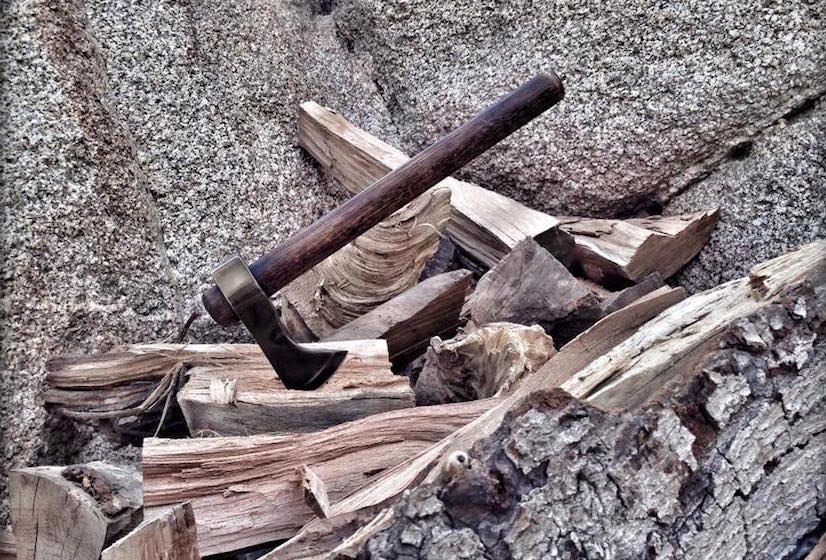As with any tool you may need to bet your life on, your ax/hawk needs to be cared for properly. If you manage to take care of your tools, you may likely be able to pass them on to your children. Caring for your ax is very similar to caring for a field knife and since I covered knife care in another series, I will try not to duplicate the information too much.
You don’t want to grab your ax to chop some wood and discover it is dull but you are too tired and/or cold to spend the time sharpening it.
Just like a knife, a sharp ax or hawk is safer than a dull one. Whereas an overstrike with a knife may cut you or cause a puncture, an under-strike with an ax can lead to having an ax head embedded in your shin or foot- one of the worst injuries you can sustain in the field. Be sure to keep your ax sharpened and ready for use at all times. You don’t want to grab your ax to chop some wood and discover it is dull but you are too tired and/or cold to spend the time sharpening it.
For sharpening, I prefer to use the Lansky Puck. 120 grit on one side and 280 on the other. I can perform minor repairs on damaged edges and bring the edge to a fine edge in the field. For more serious repairs, I use a fine mill file with the handle broken off. I will usually leave it in my truck or at base camp with a two sided stone for more serious work. The Puck stays in my haversack though. It is light enough for carry and does 99% of what I need done for my edges.
Using the Puck is pretty simple. Rub in a circle along the edge and repeat on the other side. I soak mine in water just as I do with my knife stones. Sharpening with a larger stone is essentially the same as sharpening a knife; it is all about the angle you want on the edge. Once you have established your preferred angle, just rotate the handle to keep the edge sliding smoothly along the stone. I prefer to sharpen my axes as soon as I am finished using them. Staying in that habit keeps me from needing to worry about the efficiency of my tools in the event I find myself in a dire situation and need to process wood for a fire in a hurry.
Preserving my axes is as simple as applying a light coat of my handy dandy veggie oil. While I recommend that you carry an edible oil in your kit, you can carry whatever you are comfortable with. If you do encounter some rust, you can also use some creek silt, clay or sand based mud to rub any surface rust right off. Be sure to dry the head and handle well, apply some oil, and put it away. If your bit cover is leather, remove it from the head when storing for long term because the leather can cause rusting on the head as it absorbs humidity.
Handle wrapping is a good way to protect the handle from over-striking. You can use gaffer tape or athletic tape and wrap several times around the handle just under the head to create a shoulder of sorts. It’ll cushion the blow and may save your handle, and potentially your life. While I prefer a hawk due to its easily replaceable handle, an ax certainly has its advantages but is not as easily repaired in the field.
I recently processed an entire cord of wood with a Fiskars X17 pack ax and the hawk I keep hung on my haversack. It took me 3 days to finish it, and it was a hell of a workout, but I managed it. While I would not have normally done this, I wanted to get a good feel for the, new to my “tool-box”, Fiskars and the new handle on my old hawk. I certainly did that and more. I even gave my 7yr old son a chance to split some with the hawk. Keeping the edges sharp, using proper technique, and keeping safety at the forefront of my mind allowed me to finish with only a single cut to my finger that I sustained while sharpening my hawk with the Puck. ***Keep your fingers away from the outer edges of the Puck or you will pay for it.
I strongly recommend that you go out as soon as you can and give your axes a good look. Check for pitting, rusting, nicks, cracks in the head and handle, and edge sharpness. Take the afternoon one weekend to work on them and bring them all up to snuff. Once that is done, sit back and crack open a cold one knowing that you are ready for your next adventure.
